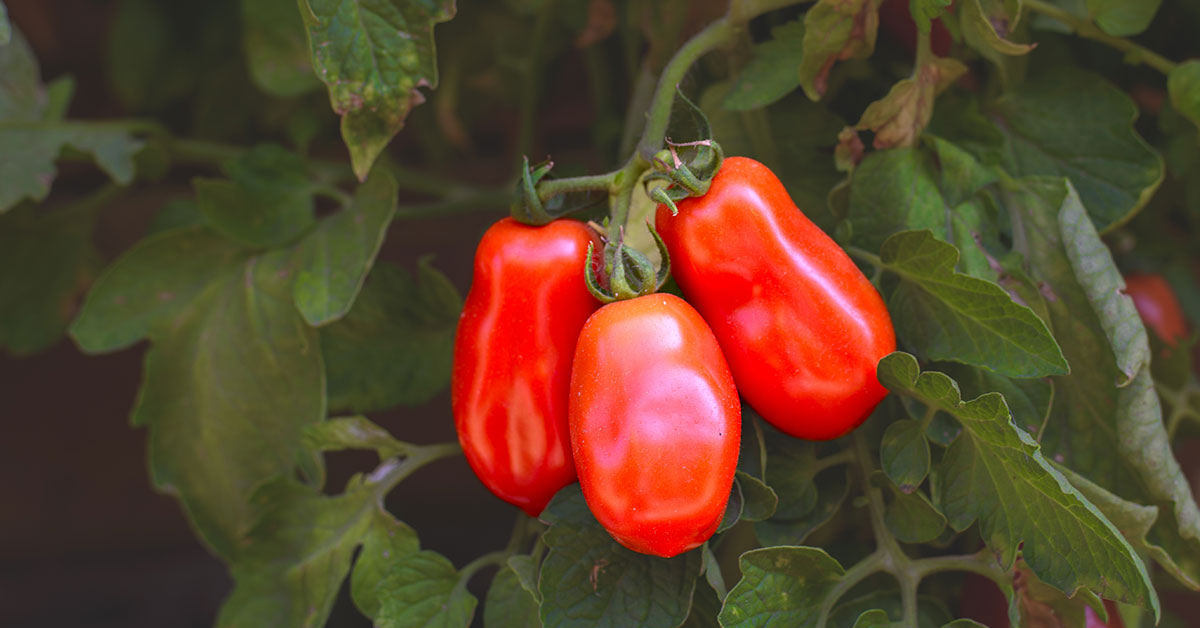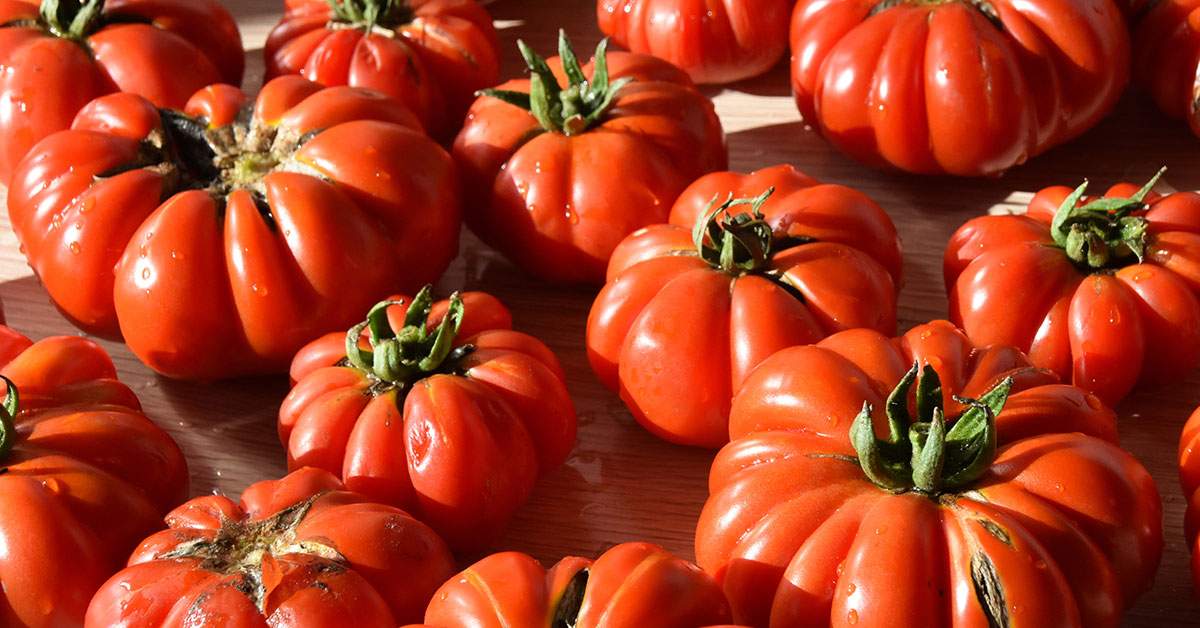If you are a fan of Italian cuisine, then you must have heard of San Marzano tomatoes. These tomatoes are not like any ordinary tomatoes; they are known for their unique flavor, texture, and aroma. San Marzano tomatoes are grown in the Campania region of Italy, near Mount Vesuvius.
They are a type of plum tomato, which is elongated in shape, and have a thick, meaty flesh with fewer seeds. The San Marzano tomato is considered the gold standard of tomatoes, and its popularity has spread worldwide. In this blog post, we will explore everything you need to know about San Marzano tomatoes, from its history to their culinary uses.
What is a San Marzano tomato
San Marzano tomatoes are a type of plum tomato that are known for their sweet, rich flavor and meaty texture. They are named after the region in Italy where they are grown, and have become a popular ingredient in many Italian dishes.
San Marzano tomatoes are typically oblong in shape, and have a deep red color with a firm, thick flesh and few seeds. They are often canned or used in sauces, as their flavor and texture hold up well through the cooking process.
One of the reasons San Marzano tomatoes are so highly regarded is due to the strict standards for their cultivation. They are grown in a specific region of Italy, and must meet certain criteria to be labeled as San Marzano tomatoes. This level of quality control ensures that consumers are getting a product that has been carefully grown and processed to maintain its superior flavor and texture.
Overall, San Marzano tomatoes are a beloved ingredient in Italian cuisine and are well worth seeking out for their unique flavor and texture.
How to start San Marzano tomato seeds
Starting tomatoes from seed is a cost-effective and rewarding way to grow your own tomato plants. To begin, choose the tomato varieties that suit your preferences and growing conditions.
Fill seed trays or pots with a lightweight and well-draining seed starting mix, plant the seeds at the recommended depth, and provide adequate moisture and warmth for germination.
Once the seedlings have developed their second set of true leaves, they can be transplanted into larger containers or individual pots. Gradually acclimate the seedlings to outdoor conditions before transplanting them into the garden.
By following these basic steps, you can successfully start tomatoes from seed and enjoy a thriving crop of homegrown tomatoes.
Additional Resource: Our comprehensive guide to starting tomatoes from seed
Growing & care
Transplanting and caring for tomatoes outdoors involves a few essential steps. First, choose a sunny location with well-drained soil. Prior to transplanting, harden off the seedlings by gradually exposing them to outdoor conditions.
Dig a hole slightly larger than the root ball of each seedling and plant them, burying the stem up to the first set of leaves. Water the seedlings thoroughly after transplanting. Provide consistent watering, aiming for 1-2 inches of water per week.
Stake or cage the plants for support and prune indeterminate varieties by removing suckers. Monitor for pests and diseases, taking prompt action if necessary. By following these steps, you’ll set your tomato plants up for healthy growth and a fruitful harvest.
Additional Resource: How to transplant and care for tomatoes outdoors
Common tomato pests and diseases
Tomatoes are susceptible to various pests and diseases that can affect their health and productivity. Some common tomato pests include aphids, tomato hornworms, whiteflies, and cutworms. These pests can cause damage to leaves, stems, and fruit, leading to reduced plant vigor and yield.
Additionally, tomato plants can be affected by diseases such as early blight, late blight, fusarium wilt, and verticillium wilt. These diseases can cause leaf discoloration, wilting, and fruit rot. Proper identification and timely intervention are crucial to effectively manage these pests and diseases and ensure the successful growth of tomato plants.
Additional Resource: Comprehensive list of tomato diseases and pests and how to fix them
Common problems
Growing San Marzano tomatoes can be a rewarding experience for any tomato lover. However, there are some common problems that you may encounter while growing these delicious tomatoes. In this section, we will discuss some of the most common issues that arise when growing San Marzano tomatoes and ways to prevent or resolve them.
- Blossom end rot: Blossom end rot is a common problem in tomatoes, including San Marzano tomatoes. It is characterized by a dark, sunken spot on the bottom of the fruit. This is caused by a lack of calcium in the soil. To prevent blossom end rot, make sure your soil is properly fertilized and watered. You can also add calcium to the soil through the use of lime or gypsum.
- Fusarium wilt: Fusarium wilt is a fungal disease that affects the roots of the tomato plant. It causes the leaves to yellow and wilt, and the plant may eventually die. To prevent fusarium wilt, plant your San Marzano tomatoes in well-draining soil and avoid overwatering. If you suspect your plant has fusarium wilt, remove it immediately to prevent the spread of the disease.
- Early blight: Early blight is a fungal disease that affects the leaves of the tomato plant. It causes dark spots on the leaves, which eventually turn yellow and fall off. To prevent early blight, keep your plants well-spaced to allow for good air circulation and avoid overhead watering. If you notice early blight on your San Marzano tomatoes, remove the affected leaves and treat the plant with a fungicide.
- Tomato hornworm: Tomato hornworms are large green caterpillars that can quickly strip a tomato plant of its leaves. To prevent tomato hornworms, inspect your San Marzano tomato plants regularly and remove any caterpillars you find. You can also use Bacillus thuringiensis (BT), a natural insecticide, to control tomato hornworms.
In conclusion, San Marzano tomatoes are a delicious and rewarding addition to any garden. However, they can be susceptible to certain problems. By taking the proper precautions and addressing any issues as they arise, you can ensure a healthy and bountiful harvest of these prized tomatoes.
Uses for San Marzano tomato
San Marzano tomatoes are a type of tomato that originated in the San Marzano region of Italy. They are known for their sweet and tangy flavor, as well as their meaty texture. These tomatoes are typically used in Italian cuisine and are a staple in many dishes.
One of the most popular uses for San Marzano tomatoes is in making tomato sauce. The meaty texture and rich flavor of these tomatoes make them the perfect ingredient for a delicious and flavorful sauce. San Marzano tomatoes are also commonly used in pizza sauce, as well as in dishes like lasagna and spaghetti.
In addition to their use in sauces, San Marzano tomatoes are also a popular ingredient in salads and sandwiches. They can be sliced and added to a fresh salad for a burst of flavor and texture, or used as a topping on a sandwich for an extra layer of flavor.
San Marzano tomatoes are also a popular ingredient in soups and stews. Their rich flavor and meaty texture make them the perfect ingredient for hearty and flavorful soups and stews.
Overall, San Marzano tomatoes are a versatile ingredient that can be used in a variety of dishes. Whether you’re making a classic tomato sauce or adding them to a fresh salad, these tomatoes are sure to add a burst of flavor and texture to any dish.













